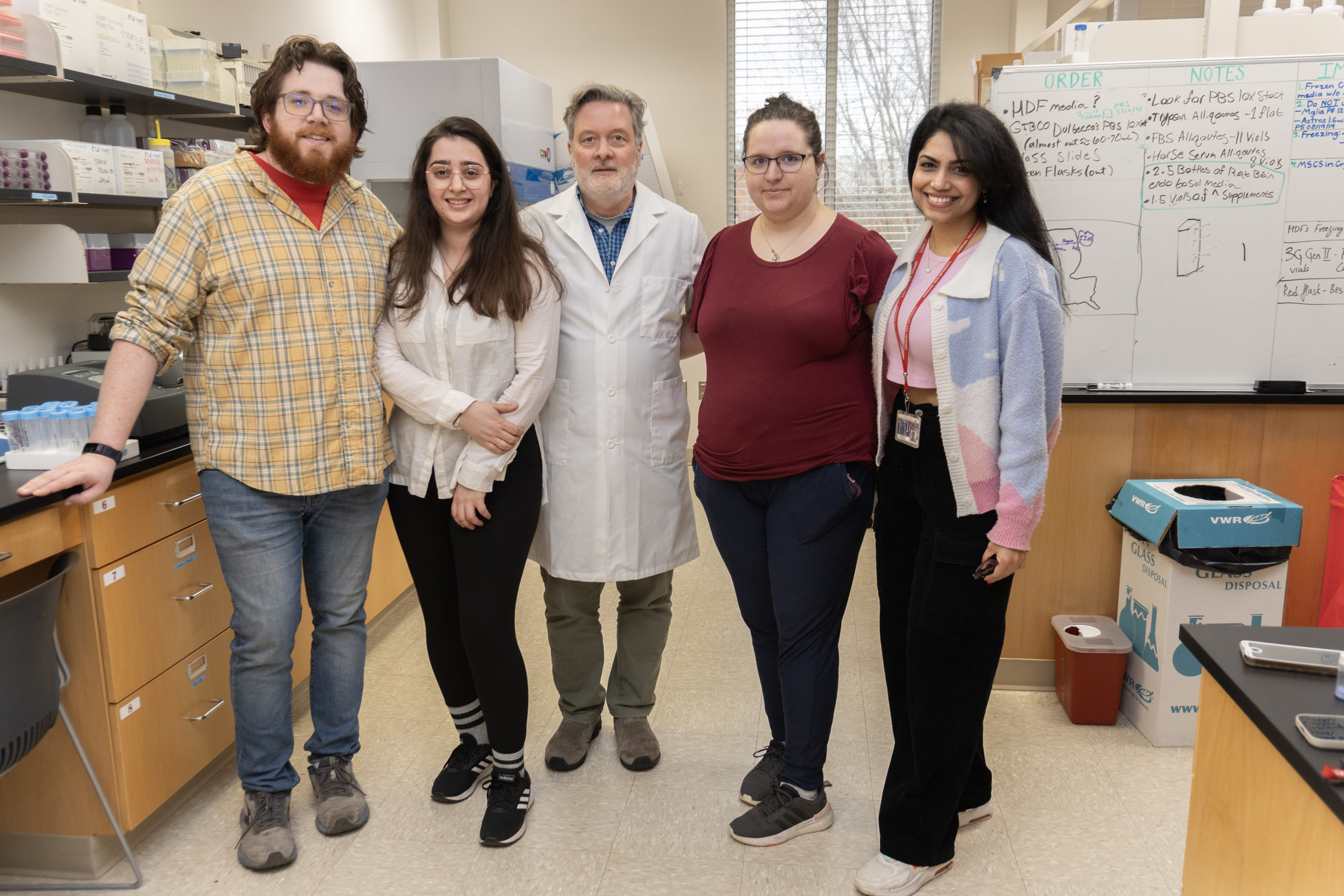COLLEGE OF ENGINEERING & SCIENCE
Louisiana Tech Team Discovers New Nanomaterial

Louisiana Tech Biomedical Engineering students in Dr. Mark DeCoster’s Cellular Neuroscience Lab played pivotal roles in discovering a new nanomaterial, copper high aspect ratio structures (CuHARS), which may revolutionize medicine.
In collaboration with an international team led by DeCoster (James E. Wyche III Endowed Professor of Biomedical Engineering, associate director of Tech’s Center for Biomedical Engineering and Research and a member of the University’s Institute for Micromanufacturing), Kyle Rugg, Kelly McMahen, Katie McKenzie, Maral Maghsoudloo, Shaylee Boudreaux, recent doctoral graduate Dr. Anik Karan, and Fulbright Scholar Dr. Margarita Darder helped discover and test the new material, which has antibiotic and angiogenic properties, killing bacteria and promoting tissue regeneration.
The nanomaterial is composed of a unique selfassembling, biohybrid material that combines copper with the amino acid dimer cystine, showcasing nanoscale and micron-scale features. The team believes that its ability to assemble at body temperature and completely biodegrade creates new medical treatment options that could revolutionize tissue regeneration and wound healing.
“It is exciting to see applications for CuHARS continue to be developed as we learn about its structure and capabilities,” DeCoster said. “We were not looking to discover this material, but once we determined how to reproduce it, we started generating more of it and sharing the process with colleagues and collaborators. We will continue the work and research at Louisiana Tech University, and now in great partnership with others, we can discover new applications for it from around the world.”
Their findings, published in the American Chemistry Society’s ACS Omega journal, showcase groundbreaking research that Louisiana Tech students can participate in.
I have been fortunate to work on numerous projects, including our recent publication. These nanomaterials have many beneficial functions, including biodegradation, that make them viable sources of copper. This publication is the result of our lab’s dedication, diligence and collaboration. I am grateful to have the opportunity to be a part of this lab and the discoveries we have made.
Karan, now a postdoctoral fellow at the University of Kansas, says he looks forward to seeing the nanomaterial in application.
“Copper-cystine biohybrids are unique biomaterials that are biodegradable, biocompatible, and biomimetic. These characteristics make them suitable metal-organic conjugates in regenerative medicine applications. Their angiogenic and antibacterial properties could become a wound-healing product. As a researcher, I would love to explore the research in preclinical models soon.”
As the Cellular Neuroscience Lab and collaborators continue to test CuHARS’s applications, they are working with the Stone Research Foundation in San Francisco and Louisiana Tech’s Division of University Advancement to generate funding for the project.
If you are interested in supporting this groundbreaking work, contact Dr. Sumeet Dua (sdua@latech.edu) or Dr. DeCoster (decoster@latech.edu).